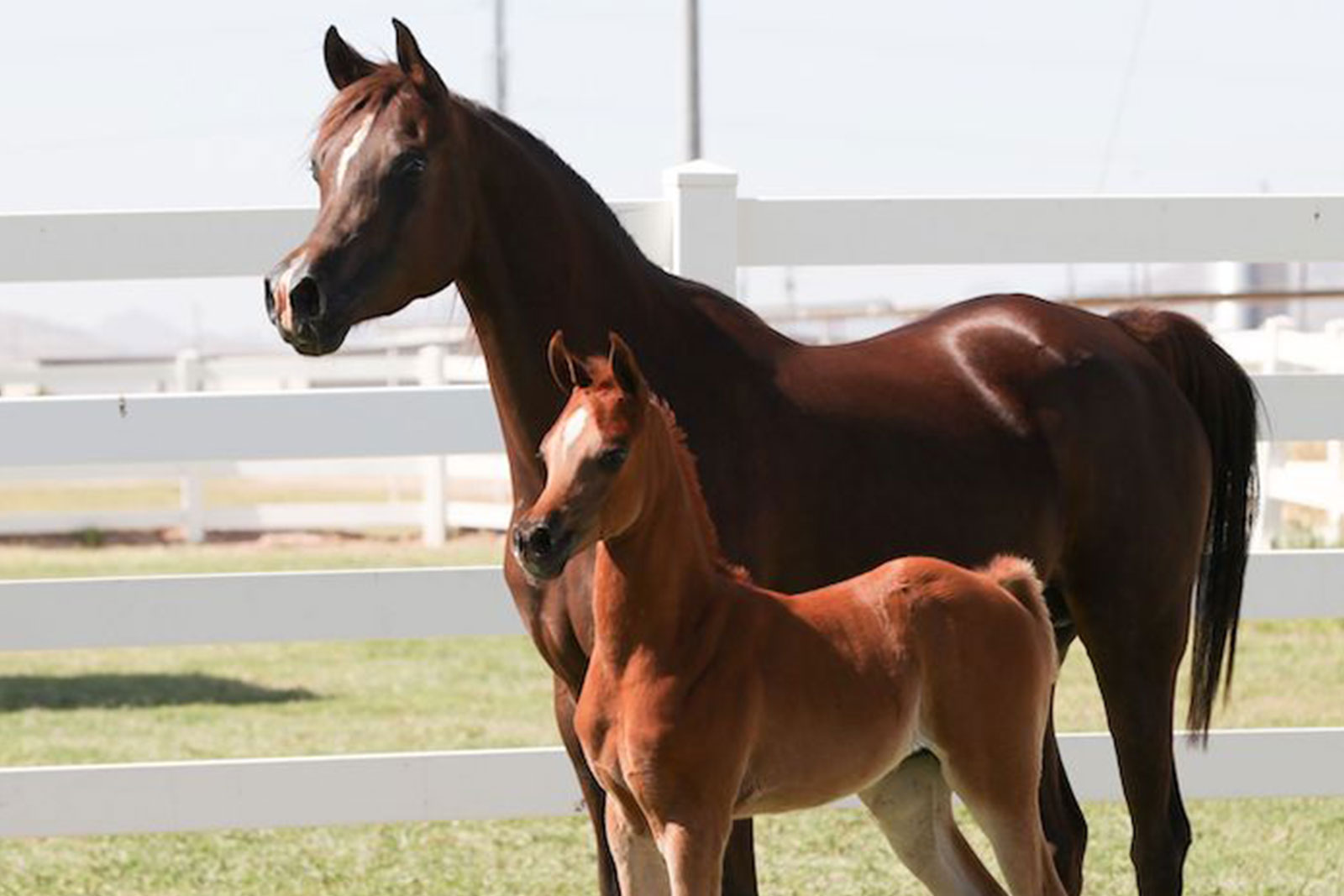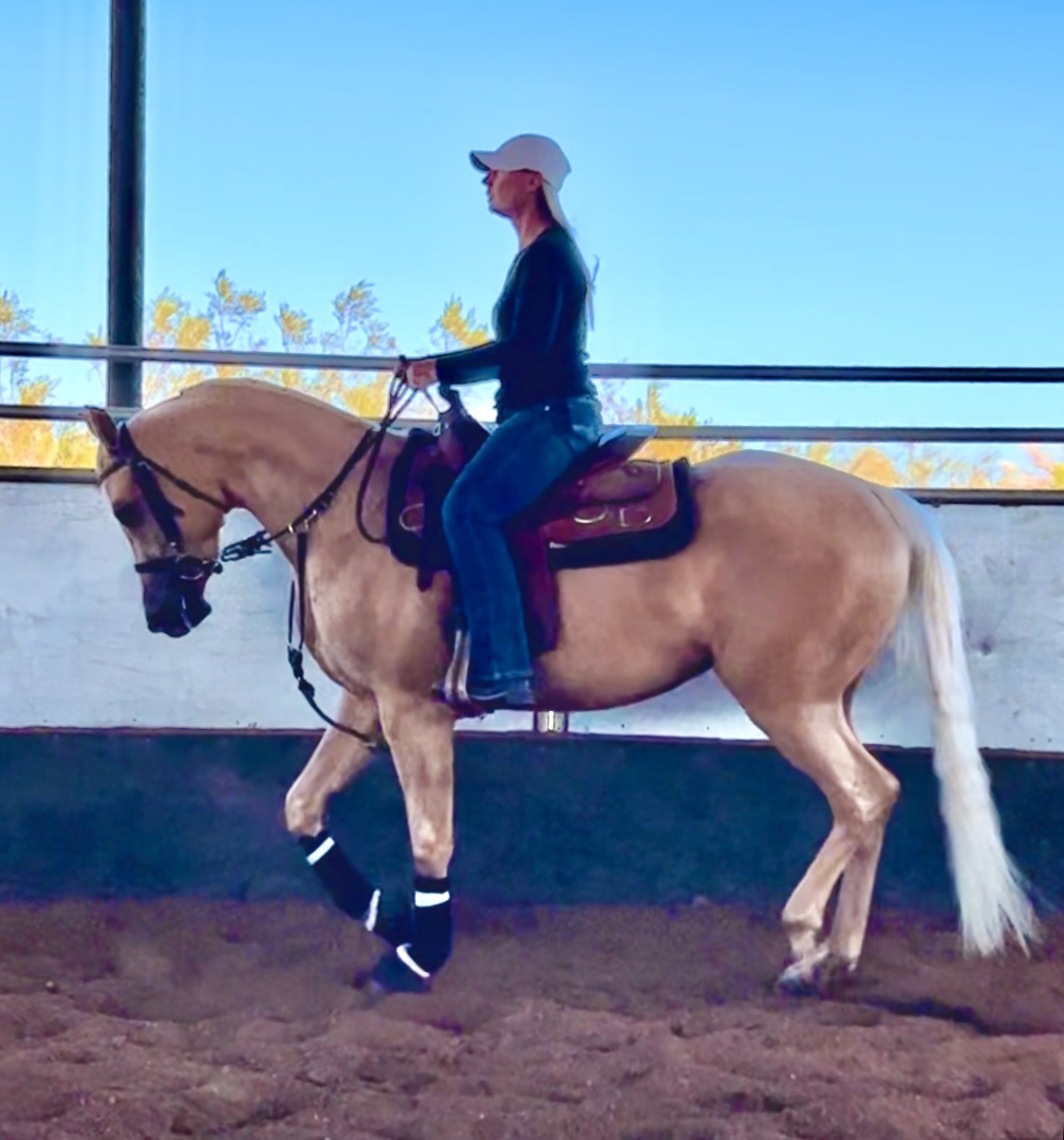By Cindy Reich
As featured in the April 2005 Issue of Arabian Horse World.
I was happy to see “Saint” back again. We foaled her out last year, and she was a veteran. In fact, she had more than paid her way as a broodmare. This was going to be her 16th foal. I was disappointed in her condition — she was “ribby” and her coat was dull. Her owner brought her in about 14 days before she was due to foal and I noticed that the mare already had a very large udder.
Our standard routine when mares arrive to foal out is to confirm the pregnancy via ultrasound examination, check to see if she has a Caslick’s (a procedure in which the lips of the vulva are sutured together after breeding to decrease contamination of the vagina and uterus from fecal material. This is often done on older mares as the conformation of the vulva changes with multiple foals and often is not well sealed against infection.) The connection between the uterus of the mare and the placenta of the foal is also checked and measured via ultrasonography. Commonly known as a CTUP (Combined Thickness of Uterus and Placenta), an abnormally thick CTUP may indicate a possible infection of the placenta. It is also possible to check the integrity of the placental/uterine connection. It should be very tight with no space or fluid between the two that might indicate infection or a placenta that is detaching prematurely.
Saint had a Caslick’s that was opened up, and due to the very large udder she had, a decision was made to see if a milk sample could be obtained to run a calcium test. Using only 1.5 ml of udder secretion (it isn’t really milk yet, but a thick yellow to green fluid that is pre-colostrum) a test can be performed that measures the amount of calcium (measured in parts per million, or ppm) in the sample. There is a sharp rise in the calcium level just prior to foaling, with over 90 percent of mares foaling within 48 hours if the level is at least 250 ppm. We had been doing daily milk calcium tests on several mares that were within 5-7 days of foaling, and the levels were around 60 ppm.
Saint’s milk calcium level was 150 ppm at the time she was examined. We usually do the tests in the evening, as the levels can change fairly rapidly. That evening her milk calcium was 200 ppm. She was put under camera and a Foalalert foaling alarm transmitter was sewn on the lips of her vulva. I was a bit worried about Saint, as her body condition was not great, she was an older mare and she seemed to have a hind end weakness. This was confirmed, when in conversation with the attending veterinarian it was noted that Saint had contracted Equine Protozoal Myelitis (EPM). Although EPM is rare in our part of the country, it is prevalent in many parts of the U.S. How would this affect the mare’s ability to deliver her foal?
Equine Protozoal Myelitis is caused by Sarcocystis neurona, a onecelled protozoan that is ingested by the horse when the organism is in its infective stage. The main host for the organism is the opossum, and when food or water is contaminated by the feces of the opossum and the horse ingests the contaminated feed or water, the horse becomes infected. In the infective stage of EPM, sporocysts open up in the horse’s small intestine, releasing sporozoites that enter the bloodstream. These organisms appear to be able to cross the blood-brain barrier and cause neurological symptoms.
Clinical signs depend on the degree of infection and where the organism is located within the central nervous system of the horse. Many horses are ataxic (i.e., have a wobbly gait) and have muscle weakness. Muscle atrophy (wasting) and signs such as a head tilt or paralysis of facial nerves may also occur.
Tests for EPM are not always conclusive. A negative test does not necessarily mean the horse is EPM free. Conversely, a high percentage of horses in the U.S. have tested positive for the disease with no clinical signs. A positive test indicates exposure to the organism, but the horse may have a very mild load. Some horses may show symptoms but can improve or recover completely with treatment. Others may never recover their former condition, even with treatment.
Saint was fairly ataxic in her hind legs, and what I had taken for lack of condition may have been muscle wasting from the disease. One concern was to check her blood for anemia, (characterized by a low red blood cell count) as she was being treated for the disease. One side effect of the treatment can be anemia. Some reports caution against treating pregnant mares because the treatment can cause abortion; obviously in Saint’s case, this did not happen, but we did not have information as to her treatment history for the disease. Healthy, fit horses exposed to the disease may well be able to overcome mild infestation without treatment. However, Saint was over 20 years old, and was heavily pregnant. She had coped with the disease and the only obvious indication that something was amiss was her wobbly gait behind and a general hind end weakness.
Her first night in the foaling stall was fairly quiet, but by noon thefollowing day, she was dripping milk and was very uncomfortable. At one point, she lay down to roll in the deep straw of her stall, and had a very difficult time getting to her feet. The weight of the foal was putting a lot of stress on her weak hind end and was affecting her ability to get to her feet.
By evening, her milk calcium test was 300 ppm and she was circling the stall looking for a place to lie down. She was in labor with fairly strong contractions for about 20 minutes before her water broke. The delivery was hard for her and the foal was pulled (at the same time as each contraction) until delivery was complete. Saint remained down for over an hour, as the demands of the foaling had exhausted her. The foal, on the other hand, was a huge colt, fully developed with a good hair coat (even though it was chronologically two weeks “early”). He was on his feet within an hour, looking to nurse.
Saint had done her job, and more. At over 20 years of age, and with EPM at this late stage of life, she had produced her 16th healthy foal. She had a huge udder with an endless supply of milk. When she got to her feet, the foal found the udder and nursed happily. At 12 hours of age, a test was run on the blood of the foal to determine if he had received good immunoglobulins from the mare’s colostrum. His immunoglobulin level was over 800 dl/ml, which is considered good.
The goal now is for Saint to regain some body condition and not lose even more weight by putting everything into milk for her foal. She is already able to get up and down more easily without the weight of the foal pulling her down. Saint is not out of the woods yet, however. She will require close attention to make sure that in the coming days she regains her strength.
More blood work will be done to make sure that she is not suffering from anemia or a low white blood cell count (indicating a depressed immune system). The colt, meanwhile, is strong, healthy, and happy. The owner has decided not to put Saint through another pregnancy with the complications of the EPM and therefore this will be her final foal. Saint has earned the right to be taken care of in her final years without the stress of another pregnancy. However, something in the gleam of her eye as she follows her foal around the stall tells me that pregnant or not, she will always be a broodmare.






